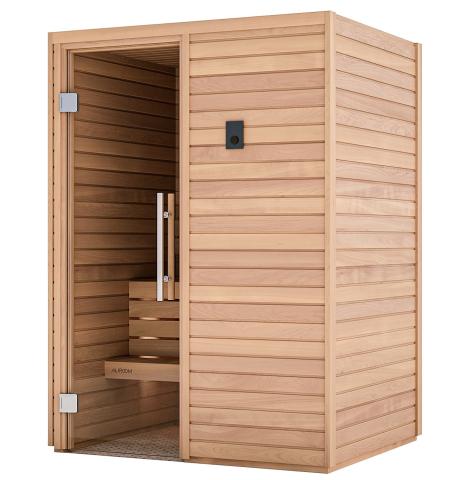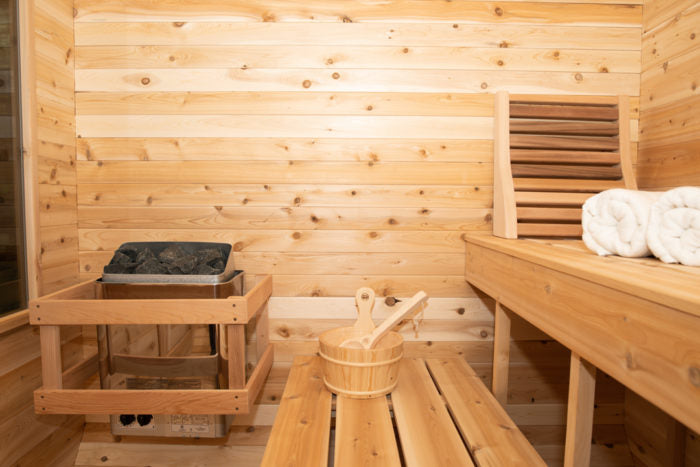Facts About Traditional Sauna Revealed
Facts About Traditional Sauna Revealed
Blog Article
Some Known Details About Traditional Sauna
Table of ContentsThe Single Strategy To Use For Traditional SaunaSee This Report on Traditional SaunaExcitement About Traditional SaunaTraditional Sauna - TruthsThe Facts About Traditional Sauna Revealed
The majority of the weight shed in a sauna is water loss and is re-gained upon rehydrating. Without a doubt sauna can be an essential part of a healthy weight loss program. To take a look at the differences between traditional and IR saunas, I will divide these right into verifiable, academic, and fabricated differences.Thus, the hottest point in the saunawhich is at the ceiling directly above the sauna heateris usually between 185 and 190 F. Claims that a standard sauna surpasses 200 F is just not true and not applicable for electric saunas marketed in the United States. The temperature level for a far-infrared sauna is normally set between 120 and 140 F; however, unlike the typical sauna, the objective in and IR space is not to achieve a heat.

When a conventional sauna has actually been appropriately heated, the sauna wall surfaces are warm, the air temperature level has attained set temperature level and the rocks are very warmed. As an interesting side note, the warmed walls and the rocks are producing far-infrared warmth, integrated with the warmed air, to create an "covering warmth".
Traditional Sauna Can Be Fun For Everyone
When the heat is achieved, the aspects cycle on and off to keep the heat. Many typical sauna individuals appreciate putting water over the rocks to develop heavy steam to increase sauna humidity degrees. The advantages of putting water over the rocks consist of: making the room a lot more comfortable, moistening the nasal passages, and permitting the usage of aromatherapy by blending important oils with the water.

When the power gets in the body, it causes the body temperature to increase and ultimately causes sweating. In an infrared sauna it is essential for the emitters/heaters to continue to be on virtually frequently. Given that there useful site is no mass of rocks to preserve warmth, the sauna will cool if the emitters turned off.
Traditional Sauna - The Facts
As stated above, the sauna bather in an infrared area wishes to position himself before running emitters to obtain optimal benefit from the heat. The home heating time for both areas can be extremely different, depending on just how the rooms are made use of. For a traditional sauna, a bather should permit 30-40 minutes for the room to attain a desired temperature and to appropriately pre-heat the rocks.

A well constructed sauna will typically attain a temperature of 150-160 F in regarding 30-40 mins (Traditional Sauna). For hotter temperatures, the space might require to heat for a longer duration. As soon as the room accomplishes established temperature level, the heater will cycle on and off, normally running about 50% of the time. The protected walls and the read heated rocks will maintain the room warm and at secure temperatures.
To some, 15 minutes was "wasted" while the infrared energy heated up the wood panels as opposed to warming a body, while others discover a pre-heated space to be a lot more comfy and think a raised starting temperature is necessary to start sweating. The size of advised usage for each area is approximately the exact same (10-15 minutes per session); nevertheless, because of the lower air temperatures and the ability to feel the effects of infrared warmth much faster than a traditional sauna, it is not unusual for an individual to invest an overall of 20-30 minutes in an infrared sauna.
Traditional Sauna - Truths

The ordinary cost per kWH of electrical energy in the united state is approximately $0.11, so a 4.5 kW heating unit will cost about $.50 to run for one hour, if the heating unit runs continually for one hour. Generally a sauna heating system will certainly run for 75% of the very first hour and 50% of succeeding hours on since the elements cycle once the set temperature level is attained.
A 2 person far-infrared space is normally physically smaller than a traditional sauna, typically about 4' x 4' or smaller. The IR heater is commonly 1.5-1.7 kW using a 120 volt 15 amp plug-in service. Considering that the area can be made use of sooner than a sauna room, we will assume the room great site is utilized for to of an hour including warm up time.
Lastly, there is a rarely gone over distinction in the social experience in between both areas. While our culture has lost some of the social benefit of the conventional sauna experience, it can be very socially gratifying (Traditional Sauna). From family time in the sauna, to heart-felt conversations with better halves, to sauna partiesthe traditional sauna experience can lead to intimate mingling
7 Easy Facts About Traditional Sauna Shown
A lot of higher end infrared spaces include tinted light treatment, noise systems and full-glass fronts.
Report this page